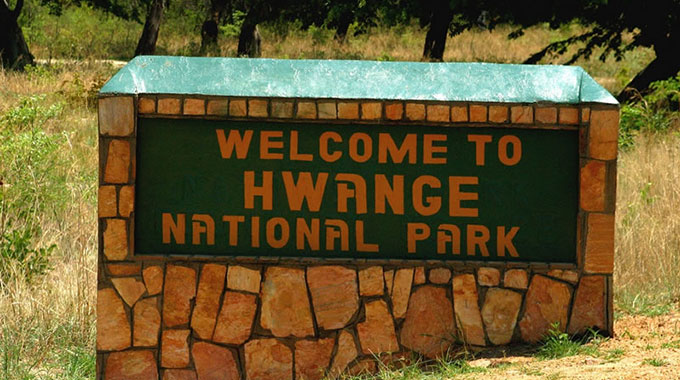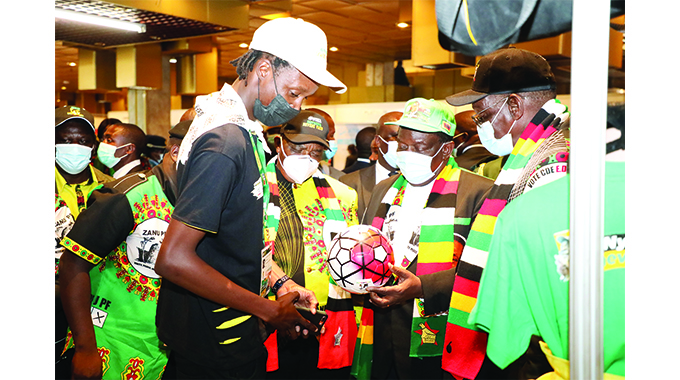200 000 cattle vaccinated against FMD countrywide

Mashudu Netsianda, Senior Reporter
A TOTAL of 200 000 cattle have been vaccinated against foot-and-mouth disease (FMD) countrywide out of the targeted 650 000 under Government’s disease surveillance and control programme.
FMD is a viral disease that affects cloven-hoofed animals such as cattle, goats, sheep, pigs and antelopes.
The disease is transmitted to susceptible animals from wild buffaloes which are the reservoir of the virus in Southern Africa.
In a post-Cabinet briefing on Tuesday, Information, Publicity and Broadcasting Services Minister Monica Mutsvangwa said 183 433 cattle have so far been vaccinated against FMD.
The routine exercise is being carried out in selected areas adjacent to national parks, as part of Government’s efforts to curb the transmission of the disease.
“A total of 183 433 cattle were vaccinated against foot and mouth disease out of the planned 325 000 and routine vaccinations are underway,” she said.
“At least 305 973 kilogrammes of tick grease were distributed to farmers out of the targeted 350 000 kgs.”

Minister Monica Mutsvangwa
In an interview yesterday, Department of Veterinary Services chief director, Dr Josphat Nyika, said the vaccination programme is part of the country’s efforts to boost the national herd under the Livestock Growth Plan, which seeks to grow the sector to US$8,2 billion by 2025 to ensure attainment of Vision 2030.
The Livestock Growth Plan, launched by President Mnangagwa two years ago, is part of the Agriculture and Food Systems Transformation Strategy, which outlines several strategies to curb the spread of the disease.
According to the Livestock Growth Plan, beef production is expected to grow from 50 000 tonnes to 90 000 tonnes, milk production from 79,9 million to 150 million litres, while the dairy herd will grow from 38 000 to 60 000.
“We have embarked on a preventive vaccination programme against foot-and-mouth, which is a routine exercise, in all high-risk areas that have national parks such as Hwange and Tsholotsho in Matabeleland North, Gonarezhou area in Masvingo and Gokwe around Chizarira and Chirisa National Parks,” he said.
“In fact, every year we vaccinate 650 000 cattle and in the first quarter. We vaccinated almost 200 000 cattle and another 200 000 will be vaccinated in the second quarter and the remaining in the third quarter.”
Dr Nyika said the exercise is aimed at preventing the transmission of FMD from buffalo to cattle.

Cattle
“The initial plan is to erect a 230-kilometre electric FMD control fence around Gonarezhou National Park, which is the hottest FMD spot in the country. Of these, 60km have already been erected by ZimParks,” he said.
“Out of the remaining 170km, 70km have already been fenced and electrified. The programme will also target Hwange, Chizarira and Chirisa National Parks. The total perimeter to be fenced is about 1 600km at a total cost of US$32 million.”
Dr Nyika said the fencing programme will, in addition to controlling FMD and other animal diseases, also solve the human, animal and wildlife conflicts at the ecosystem interface.”

Communities living along the boundaries of the national parks have been consulted for their buy-in and co-operation to ensure acceptance and sustainability of the programme.
Government will also facilitate zoning the country into infected zones, vaccination zones and FMD free (green) zones through hot iron branding and electronic ear tagging of cattle and fencing.
“The electronic tag will contain the history of the animal, including its date of birth, parents, birth weight, diseases, treatments, and productivity parameters as well as identify the zone and farm of origin for the animal. The traceability will assure the consumer of the food safety,” said Dr Nyika.
“This is important to facilitate access to high value regional and international markets as the product is traceable from farm to fork. The tag will also aid animal movement control and help detect illegal movement and suspect stock theft cases at police roadblocks and veterinary checkpoints.”
Dr Nyika urged farmers to immediately report when there is an outbreak of FMD so that the responsible authorities institute control measures.
FMD is characterised by blisters and vesicles in the mouth and inter-digital space.
“The presence of sores in the mouth and feet will cause the affected animals to salivate and limp. The animals become dull and stop eating and will have high fever, and calves may die from cardiac complications,” said Dr Nyika.
Zimbabwe is in the process of setting up an FMD vaccine manufacturing laboratory, a move that will see the country saving millions of United States dollars in reduced imports.
About $350 million is required to set up the laboratory. — @mashnets











Comments